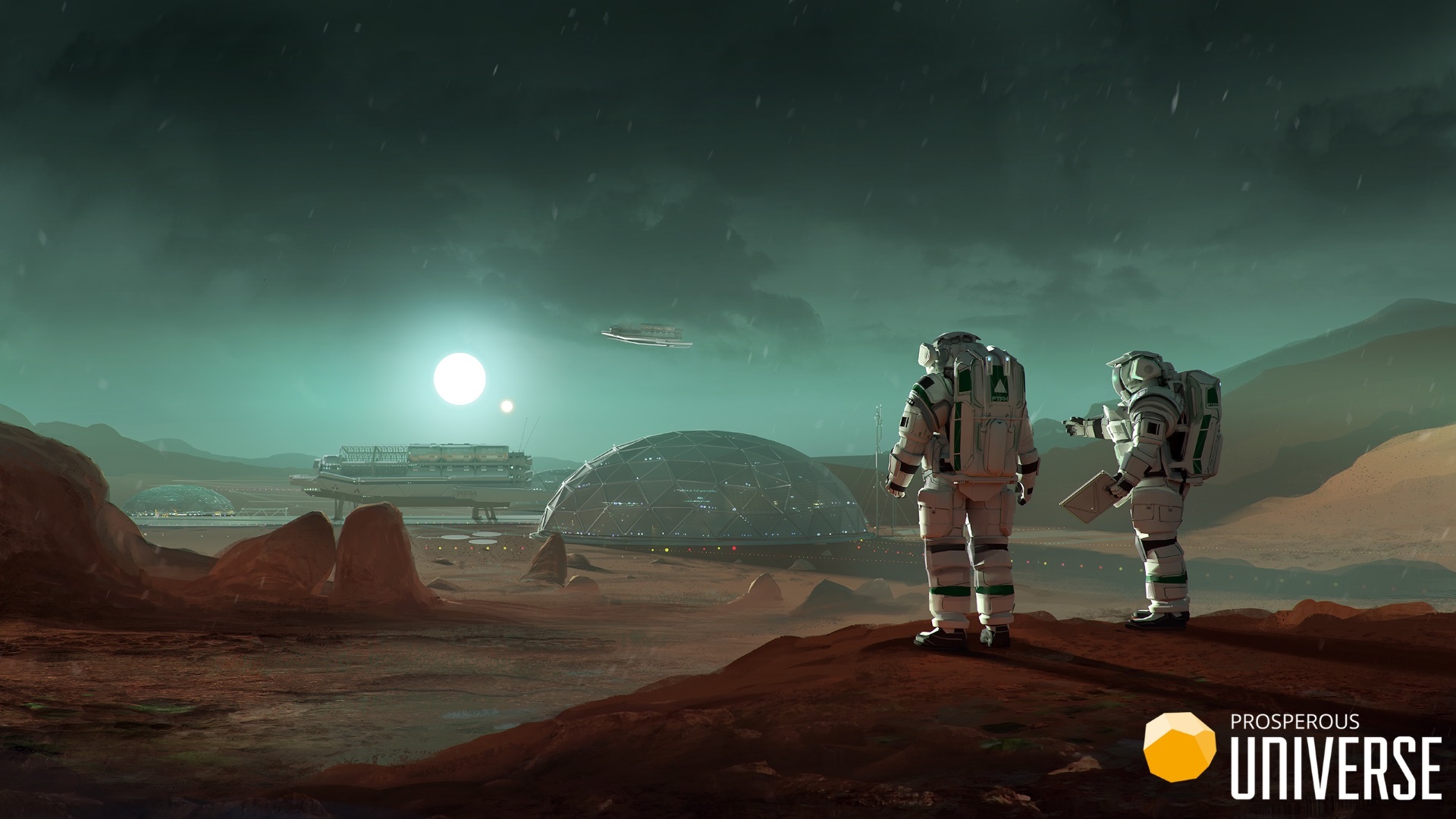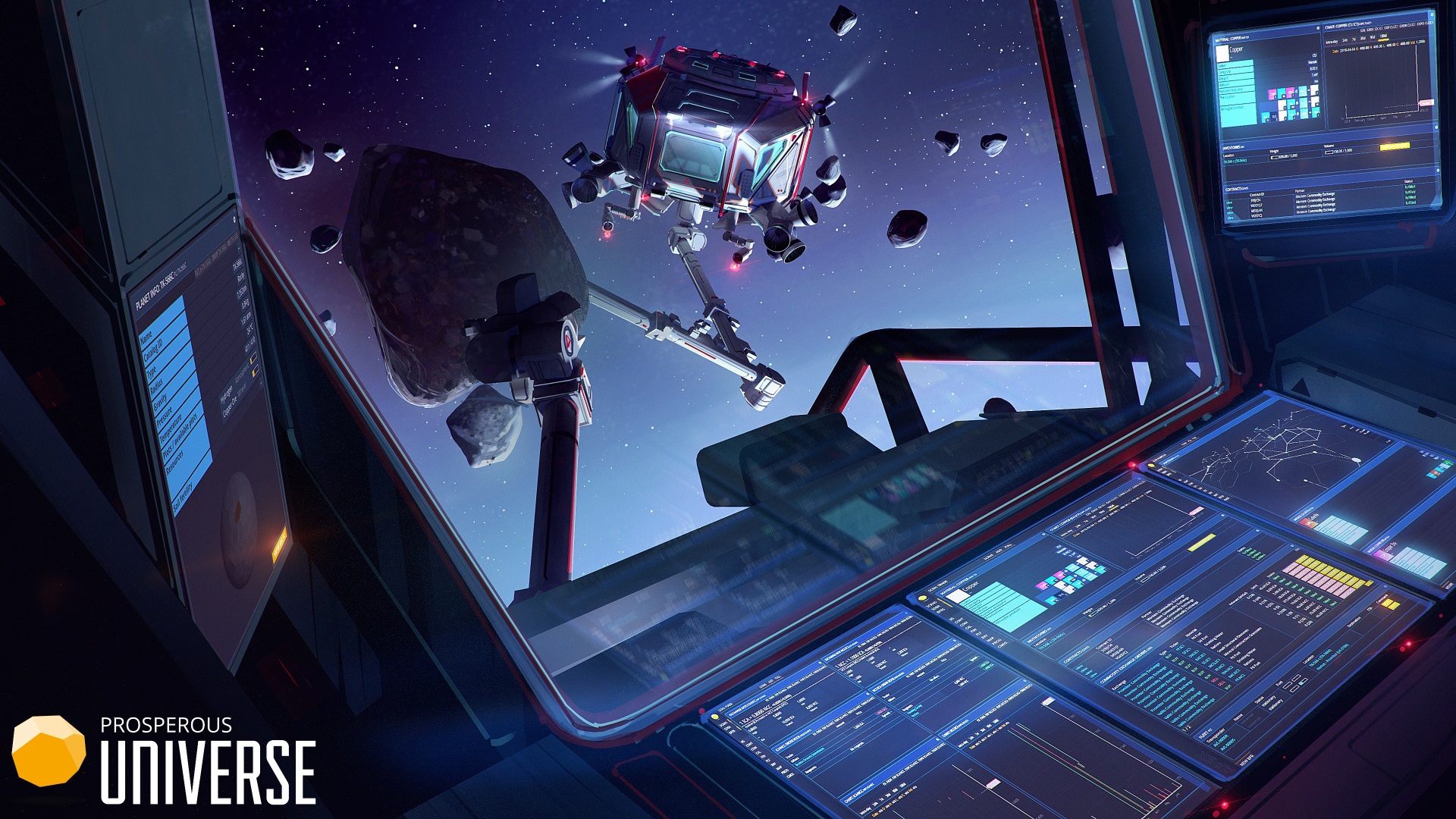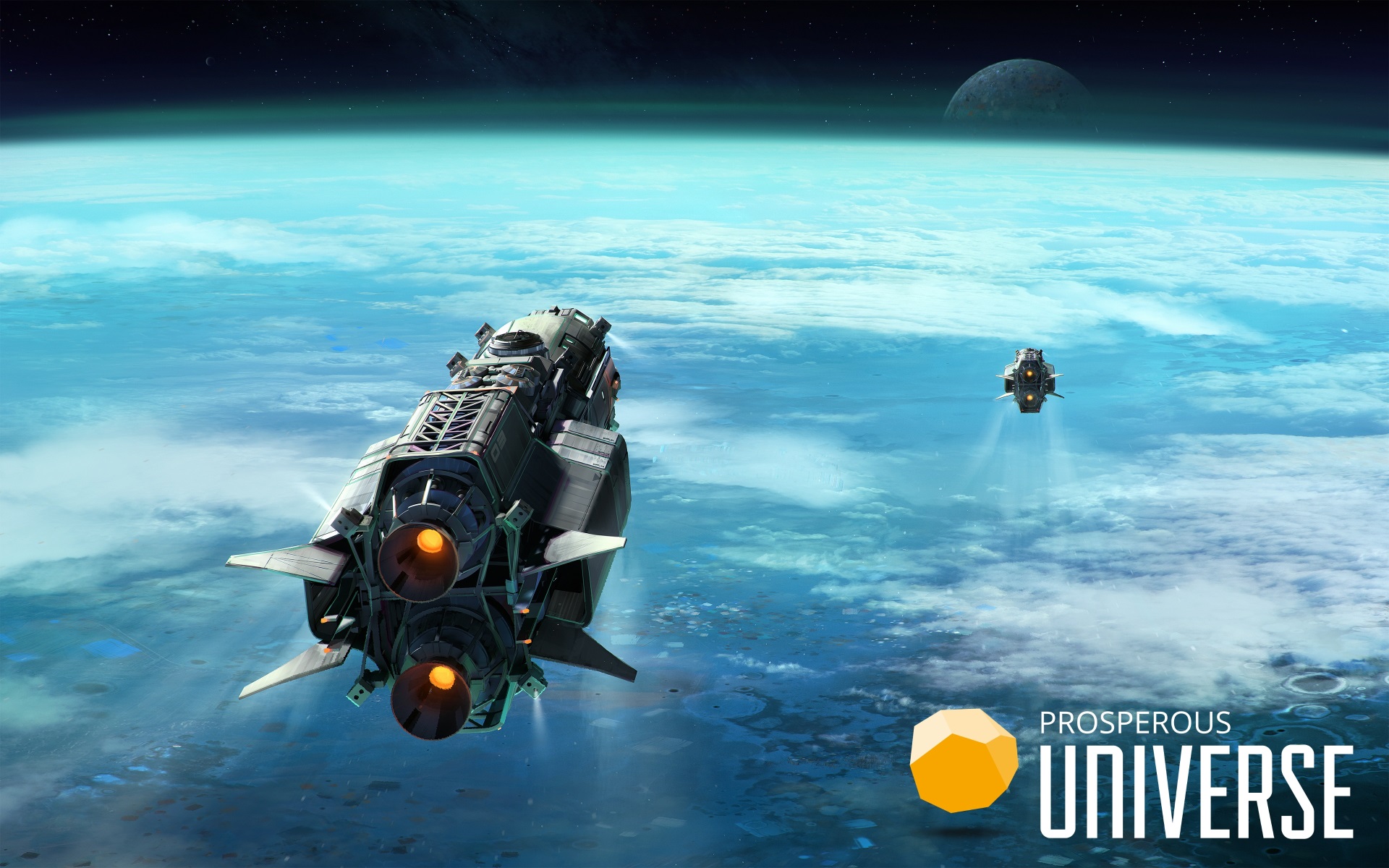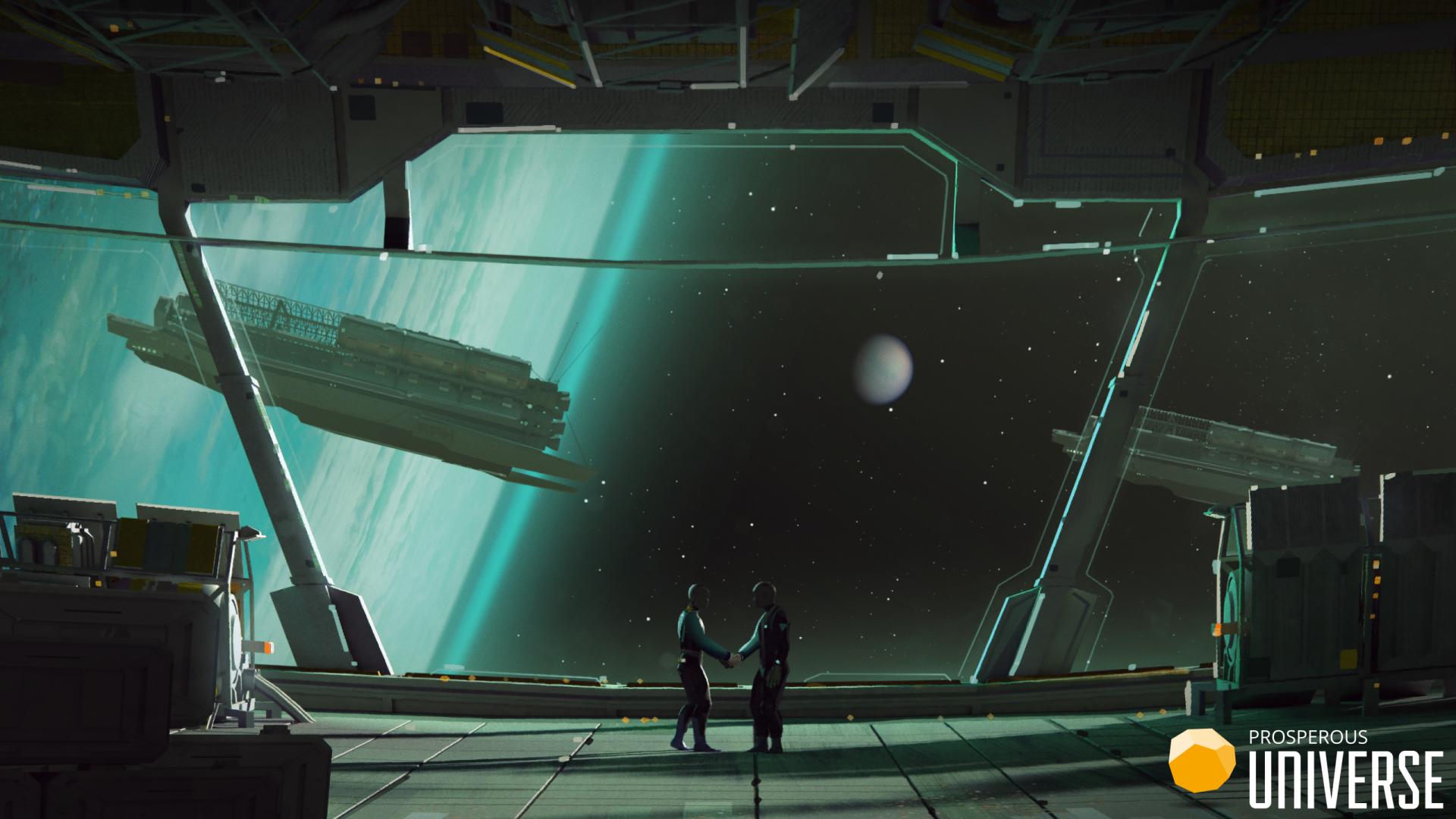Let’s imagine for a moment that the time has come for humanity to leave Earth and establish a home elsewhere. In this hypothetical situation we not only have the technology to colonize one planet but multiple planets across the galaxy. But how would this actually work? How would humans transform massive undiscovered worlds into thriving lucrative economies? Let’s find out.
Selecting a New Home
Currently, humans rank as a Type 0 civilization on the Kardashev scale, where we have not yet been able to harness all the power that comes from the sun on Earth. A Type II civilization, on the other hand, has figured out how to harness all the energy from a neighboring star. For the purposes of this article, we will assume that humanity has reached a Type II rank on the Kardashev scale so we are not limited by the amount of energy required to expand and colonize. The Dyson Sphere theory is one of the most widespread and interesting theories on how we could hope to achieve this one day. To simplify, it involves placing a network of rings around the sun (or other star) in a spherical shape in order to capture all emitting energy for both local and export use. Astronomers theorize that if we were to find an extraterrestrial advanced civilization, we would most likely find a structure similar to the Dyson Sphere in their stellar neighborhood.
Not every planet, moon, or asteroid out there is suitable for human life. There is a wealth of factors to consider like atmosphere, minerals, temperature, pressure, access to water, and terrain. Proximity to Earth or the major planetary economic hub would also be a factor since import/export cost for resources increases as the distance from said planet increases. We will get into the details of trade a bit later. Gravity is also a topic for debate since places like the Moon and Mars have much less surface gravity than Earth. Spaceflight osteoporosis is frequently cited when discussing raising children on low-gravity planetary objects since they would develop much weaker bones and could only enter Earth’s orbit in the direst of circumstances. The weight of the gravity on their frail skeletons would be incredibly painful and as such pseudo-gravity would most likely be implemented in colonies with low-g. With all the complications that a new atmosphere brings, the concept of terraforming is brought up frequently in conversation. Terraforming is the process of transforming an environment that is not suitable for human life into an environment reminiscent of Earth. An example of this would be heating Mars, which is much too cold for human inhabitants, by introducing more carbon dioxide and water into the atmosphere.
Last but not least and the focus for the rest of the article, economic viability plays a huge part in determining if a planetary object is deemed worthy enough for colonization. While the colony might be dependent upon the closest economic hub when first established, later it will need to become self-sufficient and be able to produce and trade goods with neighboring economies to grow and prosper.

Production: From Rocks to Riches
So, you’ve just stepped off the spacecraft and onto your new home planet (or asteroid if you prefer). As one of the colonial leaders, it falls to you to get this place up and running. How are you going to go about this? First, adequate settlements and facilities will be needed to get the ball rolling.
The first of many environmental factors to consider is the terrain itself. Does the planet house a rocky, dry terrain or have access to water and by extension plants and clay? By designing the settlement around the environment, shipping materials for construction is negated since, as stated previously, the cost of shipping goods from neighboring planets will get expensive quickly, especially when the colony has yet to establish its own source of commodity. In harsh climates, it may make sense to employ robots rather than human workers to build and engineer facilities. Robots can work with heavy bulky boulders at a much more rapid pace than humans and would mitigate the need to bring in more doctors for construction-related accidents. It also makes sense to use the planet’s own environment for building since we know that the materials can survive in this particular atmosphere. If we suddenly introduce steel or iron on a planet that has never housed such a material, it could be possible that the material is rendered completely useless over time.
This brings us to our next topic of 3D printing. Our species already has access to this now but imagine being able to gather raw materials from your new planetary home and then being able to create buildings, streets, homes, and furniture all without the need of an assembly line. This not only means less workforce would be required but also allows for structures to be built in an efficient, timely manner. 3D printing is unfortunately not the answer to everything but will provide enough of a start to get things running for the colony. This also leads us into the next focus which is trading. What can your new planet offer that other planets need?

Trade: The Galactic Exchange
Perhaps your new planetary home has access to a raw material that has significant value like gold or platinum. It could also be that your planet has access to excess amounts of water and can grow a multitude of agricultural products that can feed dozens of colonies apart from your own. Before we go any further, let be known that some form of a capitalist system will be assumed and that supply and demand determine the value of commodities. Now let’s get into it.
Since we are talking about interplanetary trade, it is worth mentioning that with multiple colonies comes multiple currencies. Imagine how many currencies there are on Earth and now try to envision multiplying that times as many planets/planetary objects that are colonized. It will probably take thousands of years for them to have as many colonies as we have countries, but it is possible. We can also consider that since the concept of so many currencies is possible, a universal currency is put in place or at the very least a universal currency for each planet. But how would currencies be established in the first place? If we take a look at history, we can see that currencies were initially backed by something of value like gold or silver. From that it can be deduced that a similar material could be used to institute currency on a colony. For example, if ice rocks from the moons of Jupiter are discovered to be an incredible source of energy and also double as a water supply then this could have incredible value for settlers on Jupiter’s moons and thus becomes the material that defines its economic sphere and its currency.
Over time businesses are formed, and people begin buying and selling resulting in the formation of a local market. The local market exchange is by extension also created so that individuals as well as businesses can buy and sell for profit. Eventually supply and demand regulate the market giving rise to the local economy being established. Now let’s say that the ice rocks from Jupiter’s moons do not exist on any other planet and news has spread across the galaxy that this amazing material is out there and now everyone wants it. This would drive up the demand for ice rocks and as a result employ more workers on Jupiter’s moons as well as bringing in more wealth to the colony. Later, perhaps it is discovered that some of the gases on the planet help create a new source of fuel, creating a whole new industry for settlers and further increasing the economy as a whole. People start getting rich, the population increases, and suddenly the colony is no longer the ragged village it was before.
Not everything is sunshine and rainbows; however, as the colony increases in size so does discomfort and conflicting ideologies. This will cause some settlers to leave and found their own colonies along with their own local economy and local market exchange. The important thing to note here is that the second colony will not want to just totally abandon contact with the first colony and instead form a trade route that allows goods and services to be sold between the two colonies. The process will continue and eventually there will be multiple colonies on the planet with access to the trade route. Now suppose for a second you want to buy ice rocks from colony 1, fuel from colony 2, and robotic parts from colony 3. You could just travel to all three colonies but a) that takes up a lot of time and b) the price for the goods could change dramatically once you actually get to the colony. For this reason, a regional market exchange would be implemented to buy goods and services at a certain price during a specific time period. Now you can begin to imagine how things will take off from here as settlements become cities, cities become countries, and before you know it a whole international market exchange has arisen from all that colonization. With all this talk of trading, it begs the question of how goods are going to be transported on a galactic scale.

Shipping: To Infinity and Beyond
As it currently stands, space travel is much too slow for colonization on a grand scale to take place. The fastest man-made vessel, NASA’s Parker Solar Probe, can only surpass 153,454 mph and unfortunately that is just not fast enough for expanding into the far reaches of the galaxy.
Energy plays a major role in space travel since it will require a massive amount to achieve faster than light speeds required to expand beyond our current travel capabilities. There are many theories out there that explain how faster than light speeds can be obtained but we are going to explore the “warp bubble” theory.
Dr. Alcubierre, director of Nuclear Sciences Institute at the National Autonomous University of Mexico, proposes a solution to general relativity by adding the warp bubble theory. By placing a spacecraft into a warp bubble, the distance in front of a spacecraft would be shrunk to a few inches and the distance behind the spacecraft would be increased to, say, 5 light-years. Space time around the bubble is moving since general relativity theories states that there are no known limits to how space time contracts or expands. Inside the bubble, however, space time is normal (flat) and the bubble itself is propelled through space by increasing the size of the field. Think of it like being on an escalator, your body stays still but the machine itself moves you upward to your destination. Now the theory gets very complicated with discussions around negative mass that would be needed to create such an amount of energy and the possibility of antimatter existing, etc. The biggest take away from the debate is that a warp drive is theoretically possible at least on paper.
Another takeaway from this research is the realization that once a ship comes out of the bubble, a sonic boom is likely to take place causing immense destruction to anything within range. Thus, spacefarers will not only need a source of faster than light (FTL) fuel but also a tamer source of fuel that we will dub slower than light (STL). This way a spacecraft can ferry out from any planetary object before accelerating into FTL speeds and likewise it will need to arrive at a distance away from their destination, else there will not be a destination if it arrives too close.

Politics: Republic or Empire?
Until now we have discussed colonization under the assumption that humanity is functioning as a Type II civilization on the Kardashev scale. In order to properly discuss the possible political structures, we should start at the beginning of the space exploration era and work our way toward an intergalactic alliance to get an overall picture. Most of the ideas presented here are based on historical practices and relevant science fiction hypotheses.
As it currently stands, the Outer Space Treaty, signed in 1966 by the United Nations, prohibits the acquisition of any celestial body and states that space can only be used for peaceful, non exploitive purposes. Expect this to change or be disregarded as humans are forced to leave Earth due to calamitous circumstances. In order to prevent colonies from becoming like the Wild West in America during the early 20th century, governments will be heavily involved in establishment of new colonies to prevent lawlessness from ensuing.
Much like how Britain relentlessly expanded into the Americas and founded colonies to bring wealth back to the crown, early settlers will also have strong ties to Earth or the mother planet from which they came. As time passes and generations are born that have never even seen the mother planet, discontent and resentment will grow within the colony. This will be especially true if settlers are forced to send precious resources back to the mother planet that they themselves could profit from and if they feel that there is little to no representation in government. Britain was unable to quiet discontentment from across the Atlantic Ocean, now imagine trying to stifle qualms from another planet. The idea of a rotating capital has been proposed to strengthen the bond between allied colonies. We can also take this opportunity to discuss different cultural behaviors like individualism and collectivism. We might see that societies that take on a more collectivist approach are able to maintain order more sufficiently than individualistic ones. Nations that encourage the spread of information, technology, and trade as a means of strengthening the society as a whole may find greater success than ones that incentivize wealthy individuals and fame.
In a mostly capitalist-focused society, things that we take for granted on Earth like water, oxygen, and Earth-like gravity states might become commodities that only the rich can afford. For this reason, we may see a rise in true communist-style governments that provide its citizens with basic necessities while also automating everything that can be automated. This would give humans time away from menial tasks and more time to explore existential questions giving way to a renaissance throughout the galaxy.
On the other hand, we might see nations learning to genetically engineer humans to be able to live on planets without oxygen, normal gravity, etc. Without the need to terraform planets, humans could have limitless options on where to go in space and what resources to gather. As humanity expands beyond multiple solar systems with bodies that differ from “normal” humans, it might be that the extraterrestrials that nations encounter are actually long-forgotten groups of human settlers.

If you enjoyed the topics discussed in this article, you might also enjoy being a part of the Prosperous Universe community, where many like-minded individuals come together to colonize space in an online economy simulator. Explore the galaxy, design spaceships, forge alliances, and most importantly: produce, trade, transport, and profit.

